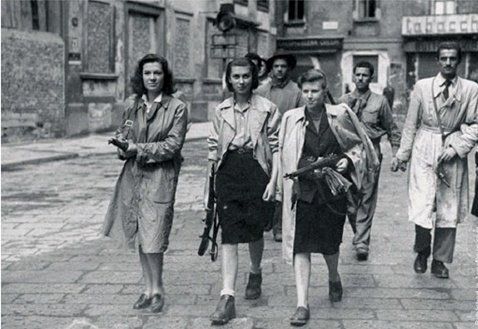
The statues and plaques and other assorted monuments in honor of the women partisans of Italy can tend — like statues, etc. of anything else — toward the abstract. It’s one thing to look at a bronze or ceramic figure or street sign and try to imagine who it symbolizes. But the 100,000 or so women in Italy who fought against the Nazis and Fascists were anything but symbolic.
A factor that wasn’t much acknowledged up until the Sixties, more or less, was that many were also fighting against the social and familial “dictatorship” of mores and customs and taboos which had changed little since the 1800’s. The partisan women were, in many respects, proto-feminists, and filmmaker Rossella Schillaci produced a documentary about them with the terse title “Libere” (“free,” in the plural feminine gender).
I haven’t seen the film, but here is the trailer; below is the text (translated by me) of an interview with the filmmaker by Eliane Viale of vice.com. This strips away some of the veneer of romance to show the ferocious reality of their lives.
THE LESS-KNOWN STORY OF THE WOMEN OF THE RESISTANCE
We spoke about what the Resistance signified for the women who acted as couriers, and not only.
(Interview by Eliane Viale, Vice magazine, and Rossella Schillaci, published in Vice magazine on April 25, 2017, https://www.vice.com/it).
Introduction: Remember the reluctance of the protagonist to recognize, even briefly, the importance of the role which the women — often adolescents — carried out.
The latent yearning of Johnny in the film for the military Puritanism made him shake his head at the sight (of the many girls who made up part of the brigade). They, in effect, practiced free love, but were young women, in their exact season of love which coincided with a season of death, they loved doomed men and love, very often, was the next to last act of their destined existence. They made themselves useful, fought, fled for their lives, knew torture and horrors and terrors, enduring them as much as the men.
The Resistance has passed into history as a thing of men, but in the ranks of the partisans there were also girls of little more or less than 20 years old, who beyond contributing in an important manner to the struggle, lived their formative lives in an environment — not only political, but also emotional — that was extremely particular.
What that period signified for Italian women, and how all the promises that developed then were later reduced to smoke, Rossella Schillaci speaks in the documentary Libere. I contacted her to know more.
Vice: The film is a selection of archival material, audio and video, among which are interviews but above all scenes of life — images that I didn’t believe even existed.
R.S.: It was Paola Olivetti, director of the National Cinematographic Archive of the Resistance, who proposed that I realize a project that concentrated on the participation of the women. The interviews were gathered over a period of 50 years, principally in the Archive in collaboration with other organizations of research on the Resistance in various places. The rest is also principally from the National Archive of the Resistance, but many other archives, public and private (from the Audiovisual Archive of the Worker’s Movement and the Democratic of the Luce Institute, but there are really many) furnished us with precious material — photographs, extracts from period documents, and family films in super-8.
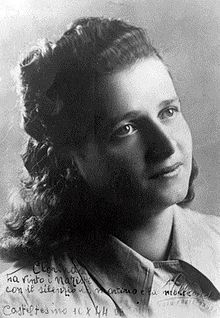
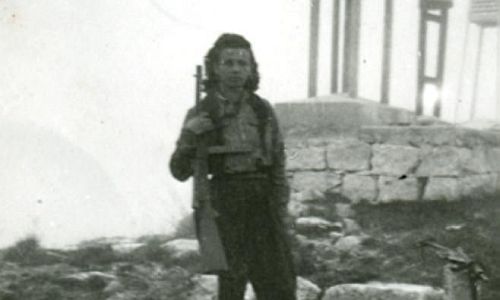
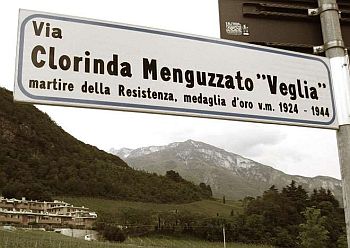
Vice: If the role of the women as couriers during the partisan struggle is fairly well known, your documentary has another focus: the fact that this participation was, in all ways, a movement of the liberation of women. “Each one did it because she wanted to feel free,” said one woman in an interview.
R.S.: Yes, listening to all the interviews I noticed that this aspect emerged, that it seems to me had never been told and which removed a lot of rhetoric from the narrative of the period — it is a period that is so mythic that it’s difficult not to make it rhetorical. Instead, these reflections, often bitter and ironic, succeed in giving a key to a new reading (of history).
The women actively entered the struggle even if it was for “contingent” motives: they had a brother, a father, the husband among the partisans — and in fact, for example, one declares to have seen her own loved ones reduced to near death; another says “There was the fight, and I wanted to be in the fight too” … But the common implication is that there was a yearning for freedom which came out because of that historic moment.
There was nothing to lose: they were homeless, they didn’t study, they worked in the factories or in the countryside in the place of men from when they were 13-14 years old. One sensed that there was a necessary change underway, for which one needed to fight. And in this change many said that they discovered what politics were, after 20 years of dictatorship, and which for all of history had been considered a thing of men. Therefore they understood that they were absolutely capable of doing everything that men were doing.

Vice: Often their role was as couriers (staffette), but many of them in the documentary lament that later it was a term that was always used in the diminutive.
R.S.: It’s true, their role of connection was fundamental at the strategic level. Without those who carried information, arms, food, who cared for the wounded, etc., the men in hiding couldn’t have done anything. And often they did this by risking a lot, because if they were taken, the punishment certainly wasn’t more gentle than that for the men…
Furthermore, it’s been forgotten their role in the cities, where the Groups for the Defense of Women were created, as much to safeguard the workers as to collect aid to carry to the brigades, as to defend the prisoners and their families. It was a finely detailed fabric and extremely well-organized, in which 100,000 women participated. There were also the factories, where the women gave life to strikes and revolts, actual sabotage as in war; and carried forward clandestine political propaganda, in newspapers and mimeograph, and in political assemblies and oral information.
Vice: Watching the documentary it’s striking the fact that the women use, to describe their participation in the Resistance, words like “adventure,” “recklessness,” “escape” from the old-fashionedness of their parents — the aspect of war is really and truly secondary. One woman tells that she went on her bicycle to get the explosive dropped by parachute by the English, and laughs remembering the official who told her to be careful on the way back because if she fell with five kilos of explosive “it would have made a pretty big hole.”
R.S.: Well, one thing that I’d never thought about is that then many girls, even if they were considered women, were only 15-16 years old, and for us they wouldn’t have been much more than children. Certainly there was a lot of recklessness, partly due to their age. But another woman told me something important: “You today can’t understand, in that period people were imprisoned for nothing, you could die, and anyway even if they didn’t kill you one died of hunger. We had nothing to lose.” There is this idea that it was all an extraordinary period, and the grand enthusiasm with which many women participated depended also on the fact that there were no alternatives.
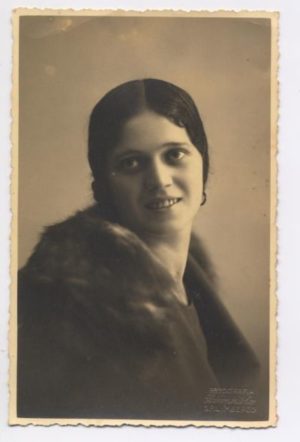
Vice: The women partisans talk about how they found themselves, for the first time, to be free, as much as the men, even in the aspect of personal relations: friendships, love stories, sex — “One made love, and lots of it,” said one. “We were all comrades, friends,” said another. Was it really so simple?
R.S.: In truth those are things that weren’t asked very often, after the war, for modesty. But those who talk say that the rapport was equal and marked by respect, by friendship. In spite of the situation, no one told me about violence, etc. In many interviews it comes out that often there was only one girl in the midst of all the men (and even they were only 16-18 years old, in many cases), but there was always a relative or the captain who protected them — and often there wasn’t any need. Certainly many love stories were born, and I discovered that there were also many partisan weddings, celebrated in the brigade by the captain or a priest.
Vice: Speaking of things that weren’t asked, I was thinking that we are the last to have the possibility to speak with people who lived those years….
R.S.: And to ask the right questions. I also interviewed some women (unfortunately there are few who are still alive), and I realized that the responses change very much according to the question that you ask. Many things, at the end of the war, weren’t asked because of a kind of modesty. It also counts that it was inconvenient also for the left to talk out loud that the women had had that freedom, that they had been together with men without the oversight of their parents… So it was all kept quiet, and for this reason many things weren’t even asked — a reason why the story of those years is a little smoothed over.
In this way many interviews stop at the Liberation, even if it’s very important what happened after the Liberation; there was a great disillusionment for the women, because the expectations, the hopes, the promises that had matured during the war weren’t all maintained. There was a return to the past.
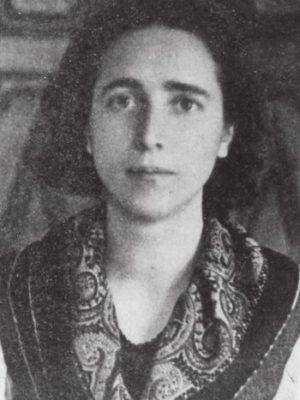
Vice: In fact, the women who had lived that independence at work and in life, at the end of the war were returned to the place they had been before. One of them says that “Notwithstanding that we were wives of partisans, our husbands were still dominant.” Society wasn’t ready?
R.S.: I can’t give you an answer as a historian, because I’m not one, but the women who I listened to spoke of a period that was extremely hard: very little work, few houses, little money; furthermore, the men had returned from the front and it seemed natural to everybody, women and men, that the women should leave the jobs to them. There was also a great mistrust regarding the partisans, who were considered hotheads — in the documentary a woman recounts that it was easier for an ex-Fascist to find work than for a partisan. Being that there were few jobs, at work as well as in the political parties the women were demoted and relegated to the home to take care of the family.
Vice: One woman in particular maintains that the feminism of the Seventies and Eighties forgot that many things had already been done during the Resistance.
R.S.: Let’s say that immediately after the war it was desirable that one should forget, nothing was done to conserve or make known what had happened. Even some representatives of the left political parties didn’t want the women to march during the Liberation, to not show how many had participated. In the same way, even though the women had immediately been given the right to vote, at the beginning they couldn’t be elected — then, fortunately, this law was quickly changed in time for the first elections.
Vice: As always in history, anyway, the results aren’t unequivocal, nor easy to interpret: one partisan, for example, says that the fact that the women suddenly had the vote guaranteed three decades of the Christian Democratic government.
R.S.: Certainly, it’s interesting that it was actually the women, the ones most committed, to say they didn’t want the vote. Because they knew how much the Christian Democrats had done in the years after the war to change votes; people even feared excommunication if they voted for the Communist Party. (Lino remembers that there were signs on the church doors threatening excommunication to anyone voting for the Communists. He stresses too that many partisans came from parish groups, religious institutes, the Boy Scouts, and that “the minimum part” were Communists.)

(Note: Anyone who has enjoyed the books about Don Camillo by Giovannino Guareschi, and the films starring Fernandel as the pugnacious priest, may not realize that the seemingly humorous conflicts between Don Camillo and Peppone, the Communist mayor, bring to life the real struggle after the war between the Communist Party and the Catholic church. Wikipedia summarizes this tension: “As depicted in the stories, the Communists are the only political party with a mass grassroots organization in the town. The Christian Democratic Party, the main force in Italian politics at the time, does not have a local political organization (at least, none is ever mentioned); rather, it is the Catholic Church which unofficially but very obviously plays that role. Don Camillo thus plays an explicitly political as well as religious role. For example, when the Communists organize a local campaign to sign the Stockholm Peace Appeal, it is Don Camillo who organizes a counter-campaign, and townspeople take for granted that such a political campaign is part of his work as priest.”)
R.S.: It would be good if (the women) had talked about it more, but the problem remains the same, the great lack of real information about those years.
(The Resistance) corresponds to the first moment of awakening of the feminist movement in Italy. As Giuliana Gadola Beltrami says, feminism was born in the Resistance and this film in some way recounts a parallel Resistance.
But the post-war period did not maintain its promises. The women in the film who are asked “Why did you do it?’ answer “Because I wanted to be free, because I didn’t like the life I was living.” But after the Liberation they found an Italy in which there wasn’t room for female emancipation. Many of them continued to work in politics but they found themselves living a forced return to the home. Their reflections, sometimes bitter, recall a forgotten piece of our history. (End of interview).
There were many women who participated in various ways and levels in the struggle for Liberation as combatants or couriers. Very many helped the partisans, they hid them, nursed and fed them, maintained contacts, and worked to save Jews and fugitives.
Following is a partial list of women partisans from the “Triveneto” who were awarded the Gold Medal for Military Valor. Their noms de guerre are in parentheses. It is taken from the “Notizie dell’Istituto” (Istituto Veneziano per la Storia della Resistenza e della Societa’ Contemporanea), April 2003. To mention some of these women is not to imply their superiority to the men, nor to diminish the courage of other women, but merely to put faces of real people onto some of the monuments, especially the one that goes underwater every few tides in Venice.
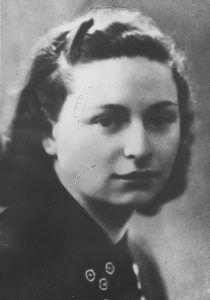
Now for some less appalling news.
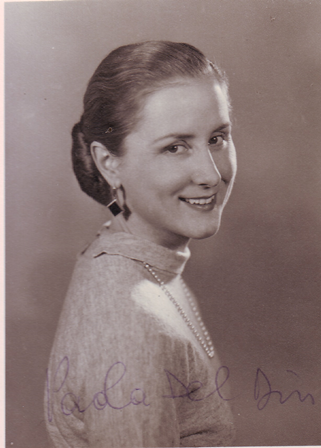
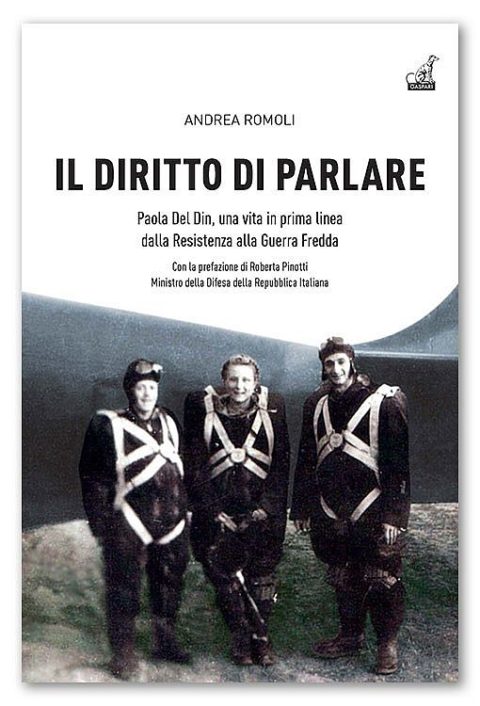
Paola Del Din (“Renata”), was the daughter of an officer of the Alpini (mountain combat infantry regiment); she had just graduated from the University of Padova with a degree in literature when she joined her brother in the Resistance.
After training as a parachutist with the English Parachute Regiment, she undertook many dangerous missions, as courier and informer, and was decorated for having completed 11 flights in war. She was the first Italian military female parachutist, and probably the only Italian woman to make a jump during combat. On April 9, 1945 she broke her ankle on landing but continued, limping, to deliver documents to the Allied advancing forces, crossing and re-crossing enemy lines.
After the Liberation, she won a scholarship to the University of Pennsylvania where she earned her M.A. degree in literature, and after her return to Italy became a middle-school teacher. In 1957 she received the maximum Italian military honor with the following motivation: “Beautiful example of a partisan, she knew in every circumstance how to carry out with rare capacity and manly courage (virile ardimento) the assignments entrusted to her, demonstrating always a lofty spirit of sacrifice and a limitless dedication to the cause of liberty.”
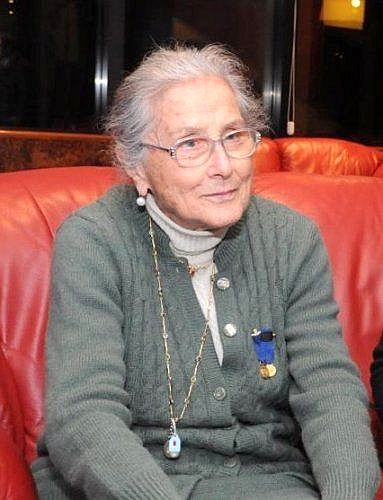
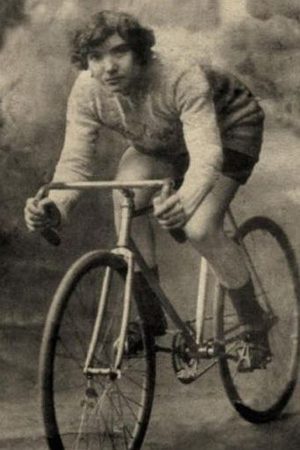
Tina Anselmi (“Gabriella”), born in Castelfranco Veneto, was part of a group of high school students in Bassano del Grappa who were forced to witness the hanging of 31 partisans as reprisal by the Nazis on September 26, 1944. Not long after, at age 17, she joined the Resistance as part of the Cesare Battisti Brigade. (Note: She was not decorated with the Gold Medal for Military Valor, but she earned a boatload of other honors.)
After the war she earned a degree in literature and became an elementary-school teacher, but was active in the Christian trade movements and rose through the political ranks to become, in 1976, the first woman minister in the Italian government — Minister for Labor and Social Services, then Minister for Health.
She is best known for having been the main proposer of Italian laws on equal opportunity, something she fought for throughout her political life. In 1977 she passed a bill which recognized fathers as primary caregivers for their children. In the same year, Anselmi was a key supporter of a successful major piece of legislation on gender parity in employment. She chaired the National Equal Opportunities Commission until 1994, and played a significant role in the introduction of Italy’s National Health Service. Her lifetime of political work led to her being proposed, several times, as candidate for President of the Republic.

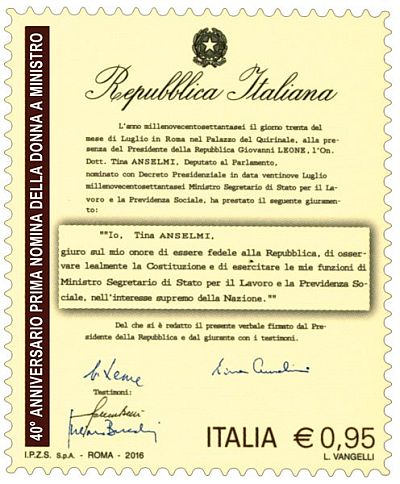
Taking all this into consideration, one is left to ponder whether a bronze statue of a faceless corpse represents the deepest significance of the partisan women. In my view, their incandescent spirits were too strong to be reduced to this crumpled figure. Dead, yes. Victims? Never.

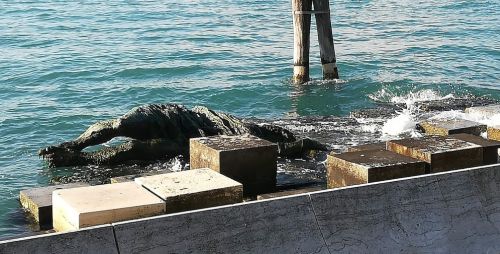
2 Comments
Erla, this is so beautiful, so interesting, so moving. Thank you (again!) for enriching us and at the same time paying a well deserved tribute to these amazing women. Needs to be published widely!
Yet again you give me so many things to look for when in Venice. Thank you.